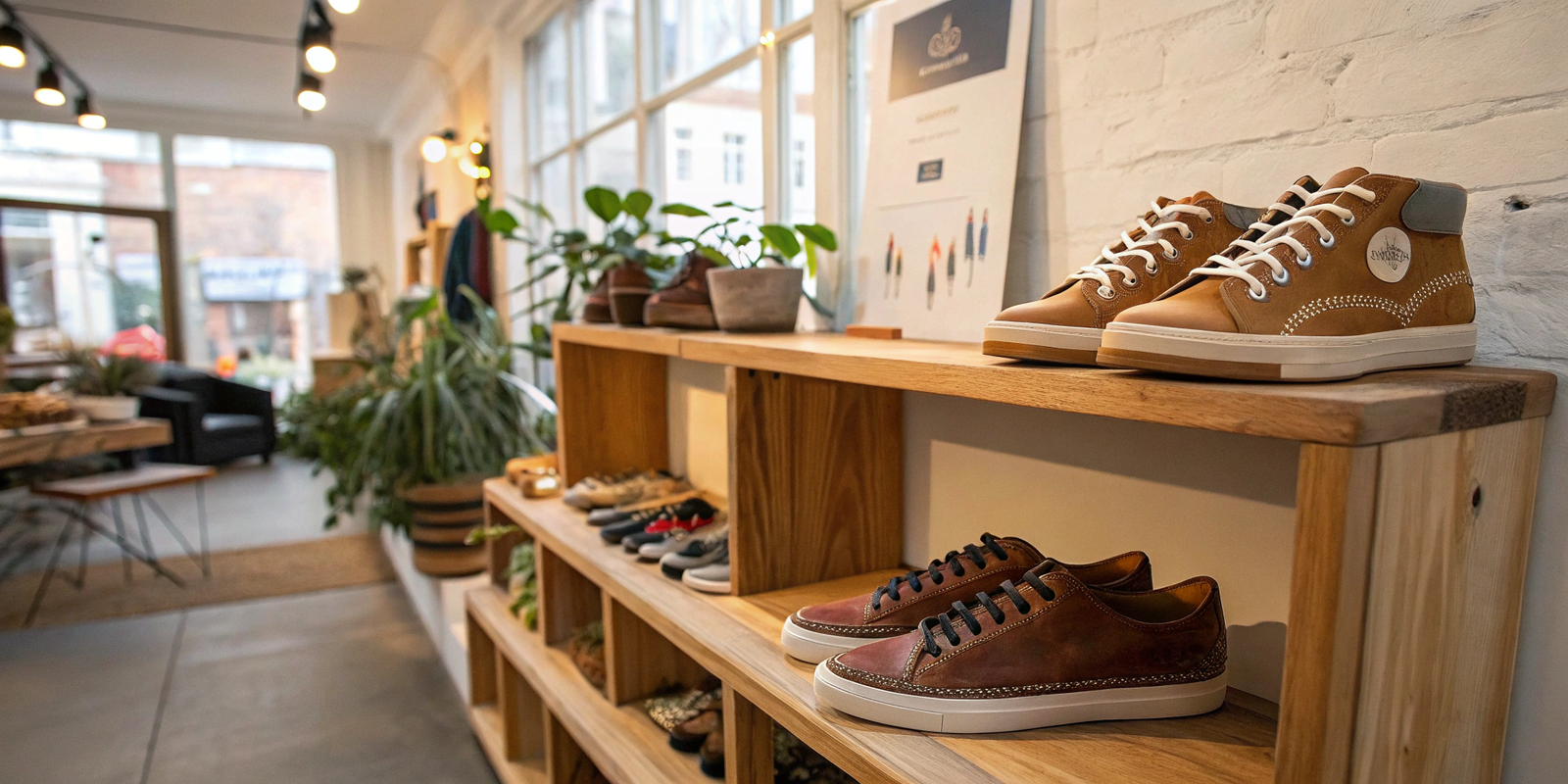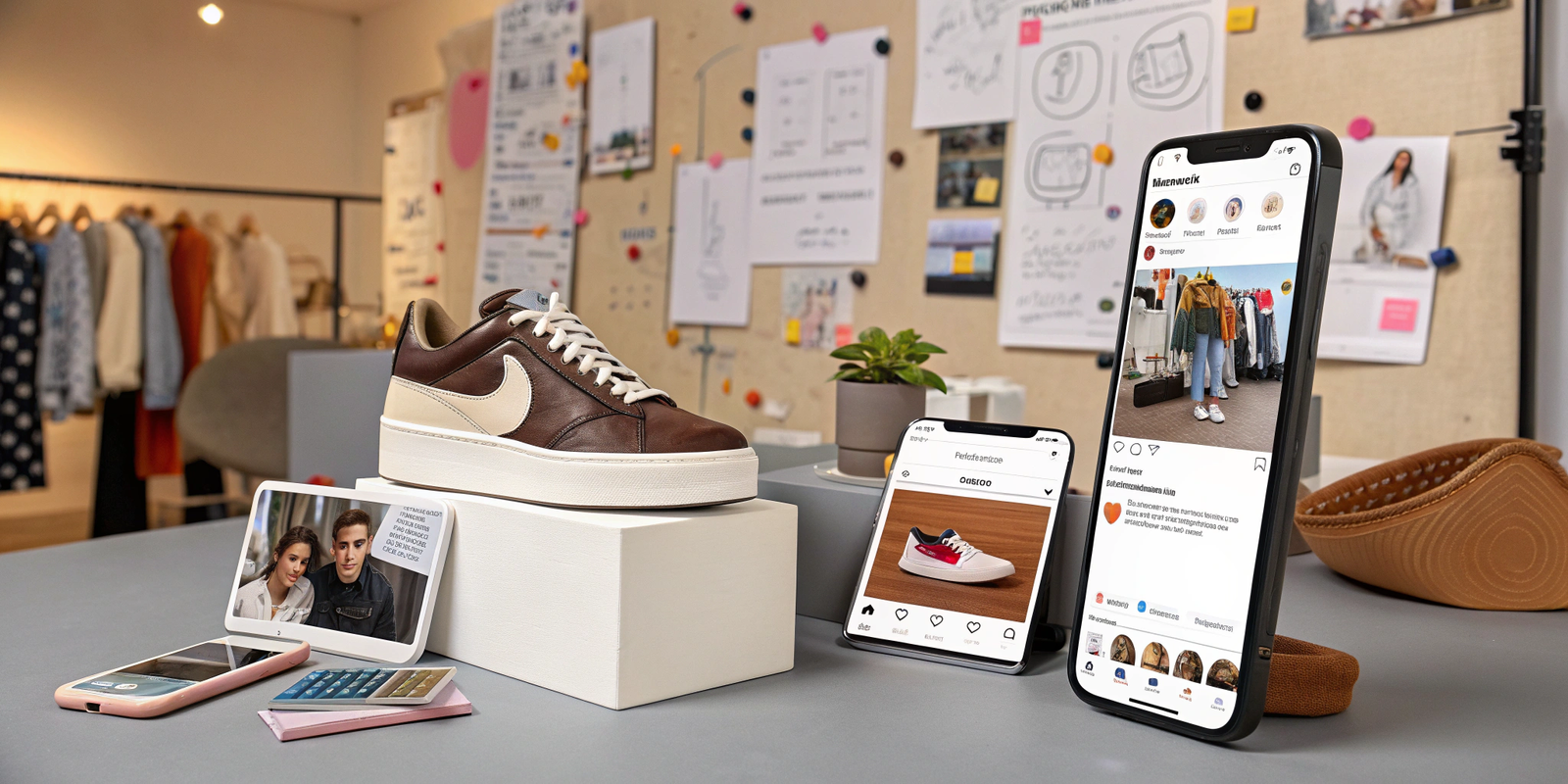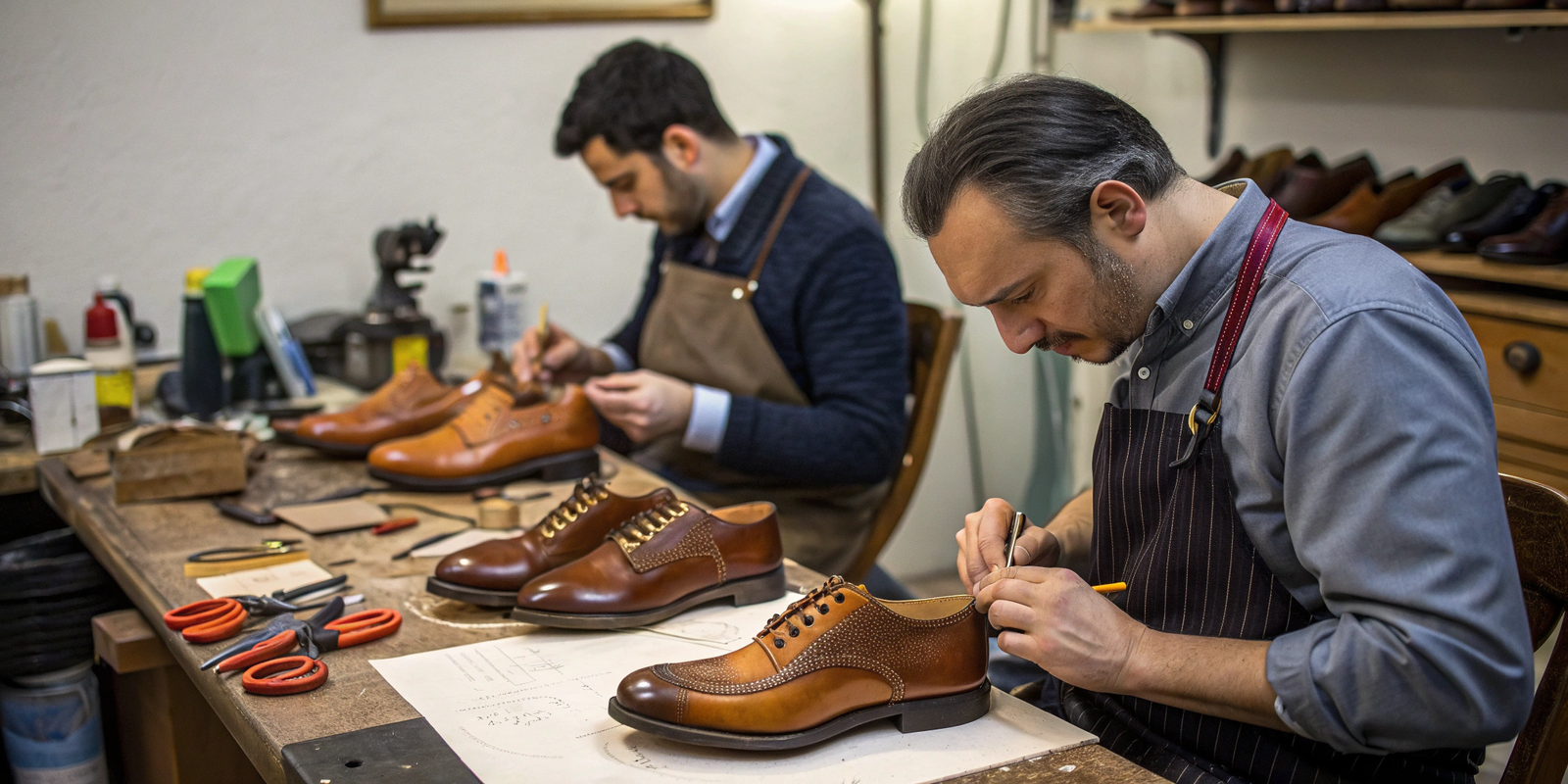Problem: In a market dominated by massive, well-funded shoe giants, it can feel impossible for a small, independent brand to even get noticed, let alone compete effectively. Agitation: You might wonder if there's any real chance for innovation or unique voices to thrive when facing overwhelming marketing budgets and established distribution networks. Solution: But what if smaller brands possess inherent advantages that allow them to not just survive, but truly flourish and carve out significant niches against the giants by 2025? Let's explore how agility, authenticity, and niche focus are their secret weapons.
Small shoe brands compete with big giants by leveraging their agility, authenticity, and direct connection with consumers, focusing on niche markets, unique design, and superior quality rather than mass production. By prioritizing strong brand narratives, excellent customer service, and innovative digital marketing strategies, especially on social media, they build loyal communities and differentiate themselves where larger corporations struggle to personalize and adapt quickly.

Having worked in an industry that sees both global titans and nimble startups, I've seen how the game changes. At Lucas, we started smaller, building our reputation step by step. We understand the challenges and opportunities for brands of all sizes. The future of footwear isn't just about who's biggest, but who's most agile and connected.
What Marketing Strategies Help Small Shoe Brands Compete? Problem: Small shoe brands often operate with limited marketing budgets, making it difficult to reach a wide audience or compete with the extensive advertising campaigns of large corporations. Agitation: It might seem like a losing battle, trying to capture attention when the giants are everywhere, from billboards to prime-time TV spots. Solution: But small brands can employ clever, cost-effective marketing strategies that leverage their unique strengths, allowing them to punch above their weight and effectively carve out their space in the market.
Small shoe brands compete through highly targeted digital marketing, excelling in content creation that tells their unique story, fostering strong community engagement, and forming strategic partnerships with influencers or complementary businesses. They prioritize authenticity and direct-to-consumer models, using email marketing, engaging social media campaigns, and compelling visual storytelling to build deep connections with niche audiences, rather than trying to appeal to everyone.
 When we started Lucas, building our brand wasn't about outspending anyone. It was about consistent quality and reliable service. For our clients, the marketing side is crucial. I advise them to focus on what makes them different and how to communicate that directly and powerfully to their specific audience.
When we started Lucas, building our brand wasn't about outspending anyone. It was about consistent quality and reliable service. For our clients, the marketing side is crucial. I advise them to focus on what makes them different and how to communicate that directly and powerfully to their specific audience.
How do small brands gain traction with smart marketing?
Small brands don't need a giant budget to make a giant impact. They use smart tactics:
- Niche Targeting and Storytelling:
- Big brands try to be everything to everyone. Small brands succeed by being everything to someone. They identify a specific, often underserved niche (e.g., minimalist runners, vegan fashion enthusiasts, nurses needing specialized comfort).
- They then craft a compelling brand story around this niche. This story is rarely about features, but about values, mission, and who they serve. This narrative connects deeply. It resonates with their target audience. This creates loyalty.
- Direct-to-Consumer (DTC) Focus:
- Bypassing traditional retail can save significant costs associated with middlemen. This allows brands to offer competitive prices. It also provides higher profit margins.
- DTC means owning the customer relationship. This allows for direct feedback, personalized experiences, and building a loyal community faster. It facilitates quick product iterations.
- Content Marketing and Visual Storytelling:
- Small brands are masters of engaging content. This might include blog posts about their materials, behind-the-scenes videos of their design process, or customer testimonials.
- High-quality photography and videography, especially on social media, are crucial. They show off unique aspects of their shoes. They also highlight the brand's personality. This creates an emotional connection.
- Community Building and Engagement:
- This is where small brands truly shine. They actively engage with their followers on social media. They respond to comments. They encourage user-generated content.
- They might initiate challenges or discussions. They create a feeling of belonging. This turns customers into brand advocates. It fosters a passionate community.
- Strategic Collaborations and Micro-Influencers:
- Instead of expensive celebrity endorsements, small brands partner with relevant micro-influencers. These influencers have smaller but highly engaged and loyal followings. This makes their recommendations more authentic and impactful.
- Collaborations with complementary small businesses (e.g., an eco-friendly apparel brand, a local coffee shop) can expand reach and introduce the brand to new, relevant audiences at a low cost.
- Email Marketing and Loyalty Programs:
- Building an email list is vital. It allows for direct, personalized communication. This is often more effective than relying solely on social media algorithms.
- Loyalty programs reward repeat purchases. This encourages word-of-mouth referrals. This builds long-term customer relationships.
- Leveraging Paid Digital Advertising (Smartly):
- While budgets are smaller, paid ads on platforms like Instagram, Facebook, and Google can be highly targeted. This ensures ads are shown to the most relevant niche audiences.
- Small brands focus on optimizing their ad creatives and targeting. This maximizes their return on investment.
These strategies allow small brands to create a powerful presence. They do this without needing the vast resources of giants. They build deep, meaningful connections with their customers. This connection drives growth naturally.
How Important is Social Media for Small Shoe Brands? Problem: With so many social media platforms and constant algorithm changes, it can feel overwhelming for a small shoe brand to effectively use social media to its advantage. Agitation: You might wonder if it's even possible to stand out in a crowded digital space, or if the effort truly pays off against the immediate reach of established advertising channels. Solution: Let's examine why social media isn't just important, but absolutely critical for small shoe brands. It provides unique avenues for connection, storytelling, and growth that are often inaccessible through traditional marketing.
Social media is of paramount importance for small shoe brands because it serves as their primary direct-to-consumer communication channel, enabling authentic storytelling, real-time customer engagement, and community building at a low cost. It allows them to showcase unique designs, highlight their brand values, gather direct feedback, and ultimately drive sales by converting followers into loyal customers, bypassing traditional retail gatekeepers and expensive broad-reach advertising.

At Lucas, when clients succeed, social media is almost always a huge part of their strategy. I've heard countless stories of how a single viral post or a dedicated community on Instagram has transformed a small idea into a thriving business. It's a powerful tool, no doubt.
What makes social media so crucial for small brands?
- Cost-Effective Reach and Marketing:
- Traditional advertising (TV, print, billboards) is incredibly expensive, largely out of reach for small brands.
- Social media offers a low-cost entry point. Brands can create accounts and organic content for free. Paid advertising on social platforms can be micro-targeted, ensuring advertising spend reaches the most relevant audience, maximizing return on investment (ROI).
- Direct-to-Consumer Connection:
- Social media removes intermediaries. This allows brands to talk directly to their customers.
- This direct line fosters personal relationships. It builds trust. It creates a sense of community. This is something difficult for large corporations to replicate.
- Authentic Storytelling and Brand Building:
- Small brands thrive on authenticity. Social media platforms are ideal for sharing their unique story. This includes their mission, values, design process, and the people behind the brand.
- Visual platforms like Instagram and TikTok are perfect for showcasing shoe designs in appealing, lifestyle contexts. They allow for behind-the-scenes glimpses.
- Community Building and Loyalty:
- Followers can become brand advocates. Social media fosters a sense of belonging.
- Brands can create engaging content. They can run polls. They can ask questions. This encourages customer interaction. This strengthens community ties. Loyal customers spread the word about the brand.
- Real-Time Feedback and Product Development:
- Social media provides an instant feedback loop. Brands can see what customers like or dislike. They can respond to questions quickly.
- This allows for agile product development. Brands can test new ideas. They can gather opinions before large-scale production. This reduces risk.
- User-Generated Content (UGC):
- Customers often post photos and videos of themselves using the products. Small brands can leverage this UGC. They can share it on their own profiles.
- UGC is highly trustworthy. It acts as social proof. It's an authentic form of marketing.
- Trend Spotting and Agility:
- Social media is a hub for emerging trends. Small brands can spot these trends quickly. They can adapt their designs or marketing messages.
- Their smaller size makes them more agile. They can respond to market changes faster than large companies. This gives them a competitive edge.
- Driving Traffic and Sales:
- Social media platforms offer direct links to e-commerce sites. This facilitates direct purchases.
- Features like "Shop" tabs, shoppable posts, and in-app checkouts streamline the buying process. This converts interest into sales.
In short, social media is an equalizer. It allows small brands to bypass traditional barriers. It helps them build strong, engaged communities. It drives sales without needing massive budgets. It is pivotal for their survival and growth in the modern market.
How Can Small Brands Differentiate Themselves in Design and Quality? Problem: It's easy for small shoe brands to feel pressured to copy popular trends set by larger companies, risking blending in with the crowd rather than standing out. Agitation: How can a smaller team with limited resources really innovate in design or consistently deliver superior quality that competitors can't easily replicate, especially when facing giants with huge R&D budgets? Solution: Small brands can differentiate themselves not by mass-producing trends, but by focusing on unique design philosophies, exceptional craftsmanship, sustainable practices, and a deep understanding of niche consumer needs, ensuring their products offer value beyond mere aesthetics.
Small brands differentiate themselves in design and quality by prioritizing a distinct aesthetic vision, often rooted in artisanal craftsmanship, limited-edition runs, and meticulous attention to detail that larger brands cannot replicate at scale. They excel by using premium, innovative, or sustainably sourced materials, focusing on specialized comfort or performance features for niche markets, and fostering a deep understanding of their target consumer's specific needs, leading to truly unique products and superior longevity that mass-produced footwear often lacks.

At Lucas, our foundation is quality. We understand that design and material choices are critical. For our clients, whether large or small, I always emphasize that true differentiation comes from a commitment to excellence and a clear vision for what their shoes represent.
What are the key strategies for design and quality differentiation?
- Focus on Niche-Specific Solutions:
- Big brands design for the masses. Small brands design for very specific problems or desires. This could be shoes for people with wide feet. It could be for ultra-light hiking. It could be stylish, sustainable casual wear.
- This deep understanding allows for highly specialized design features. They are not found in generic shoes. This creates intense loyalty within that niche.
- Unique Design Aesthetic and Philosophy:
- Instead of chasing every fleeting trend, small brands often cultivate a distinct design philosophy. This could be minimalist elegance. It could be bold, artistic expression. It could be heritage-inspired.
- This strong aesthetic becomes part of their brand identity. It draws in customers who share that vision. It makes their products instantly recognizable.
- Superior Craftsmanship and Attention to Detail:
- Many small brands emphasize artisanal production. They use skilled shoemakers. This allows for meticulous attention to detail. This includes hand-stitching, precision cutting, and flawless finishing.
- This level of craftsmanship is difficult and expensive to scale. It gives small brands a quality advantage over mass-produced items.
- Premium, Innovative, or Sustainable Materials:
- Small brands can be early adopters of cutting-edge materials. This could be recycled ocean plastics. It could be bio-based leathers. It could be advanced performance fabrics.
- They often source these materials from specialized, ethical suppliers. This provides an ethical and environmental differentiator. These materials not only perform well but also align with consumer values.
- Emphasis on Durability and Longevity:
- In a world of fast fashion, small brands often counter with products designed to last. They use high-quality components. They employ robust construction methods.
- This focus reduces waste. It provides better long-term value for the customer. It creates a reputation for reliability.
- Transparency in Production:
- Small brands can easily share their production process. They show where materials come from. They show who makes the shoes. They maintain strict quality control.
- This transparency builds trust. It reassures customers about the quality and ethical standards behind the product.
- Limited Editions and Scarcity:
- Creating limited runs or exclusive designs can build demand. It creates a sense of urgency. It appeals to collectors or those seeking unique items.
- This strategy leverages exclusivity. It enhances brand desirability. It prevents the brand from being seen as "mass market."
- Customer-Centric Iteration:
- Being smaller means direct interaction with customers. This allows feedback to directly influence future designs.
- Small brands can quickly iterate on their products. They refine designs based on real-world use. This results in products that perfectly meet customer needs.
By embracing these strategies, small shoe brands don't just compete; they redefine what success looks like in the industry. They offer a compelling alternative to the homogenous offerings of giant corporations, building a loyal following that values quality, uniqueness, and purpose.
Small shoe brands compete with giants by strategically leveraging their agility, authenticity, and direct-to-consumer connections. They employ targeted digital marketing, prioritize social media for community building and storytelling, and differentiate through unique design, superior craftsmanship, and sustainable practices for niche markets. This allows them to build deep customer loyalty and thrive alongside, rather than merely against, larger industry players.
